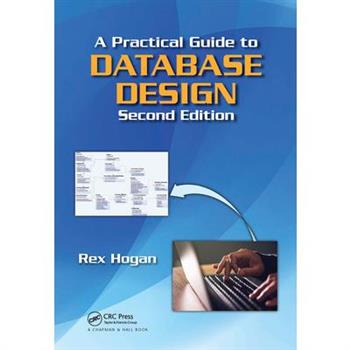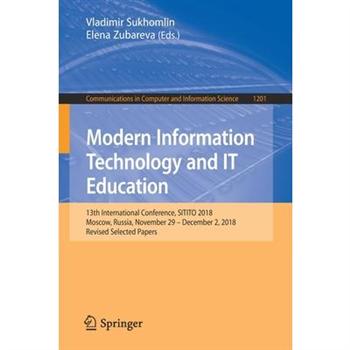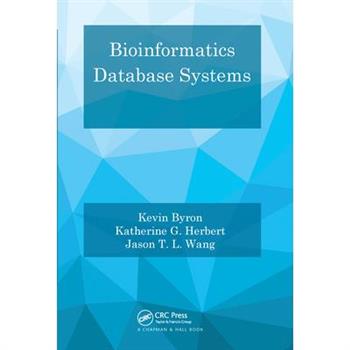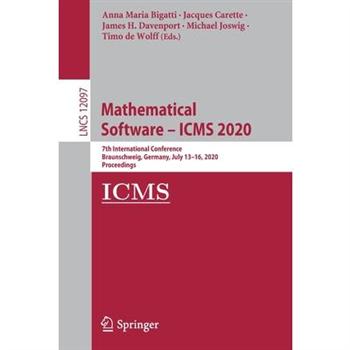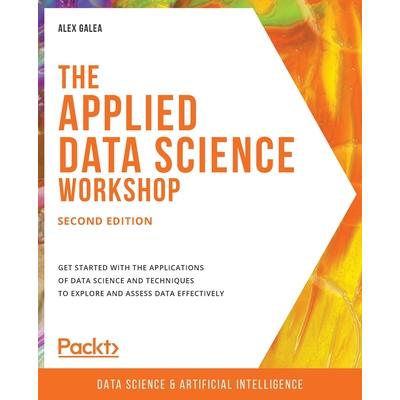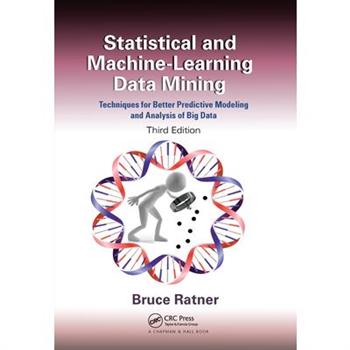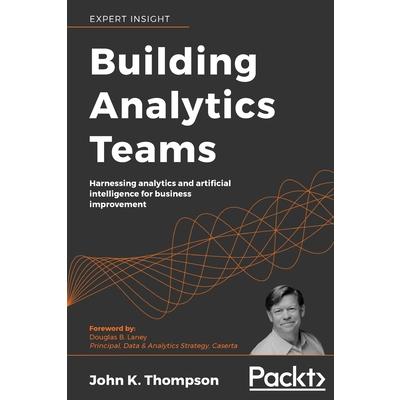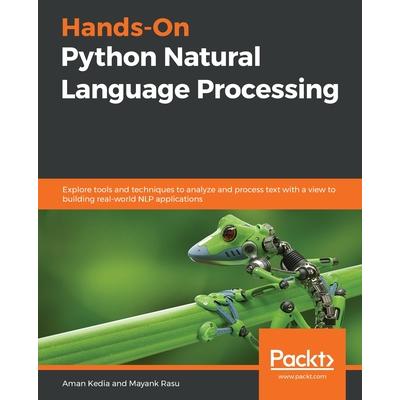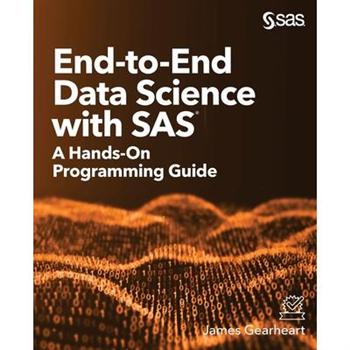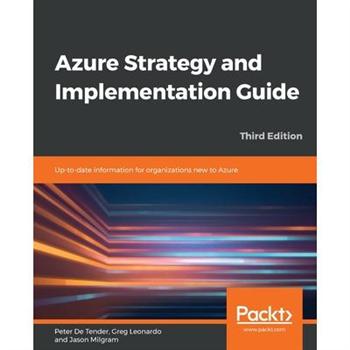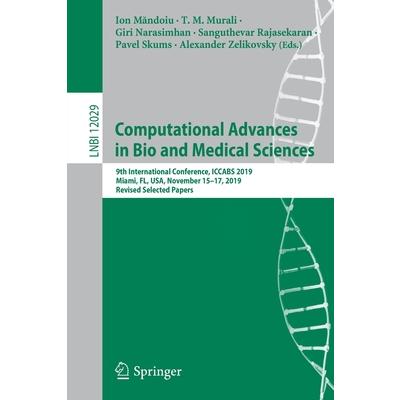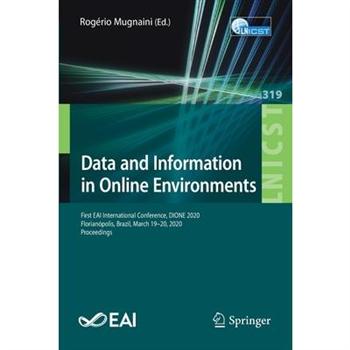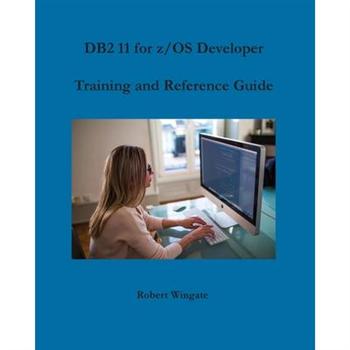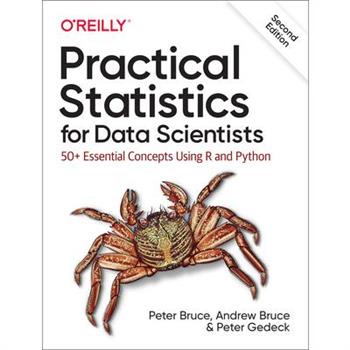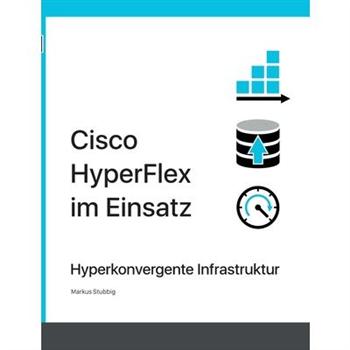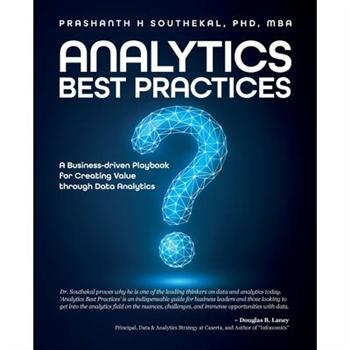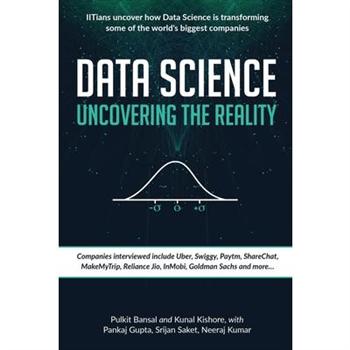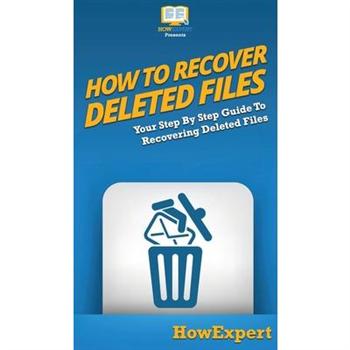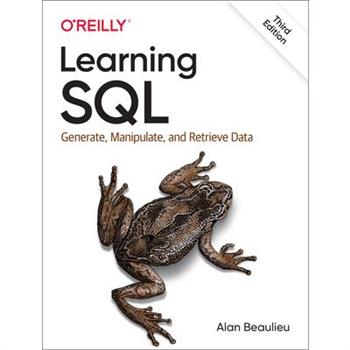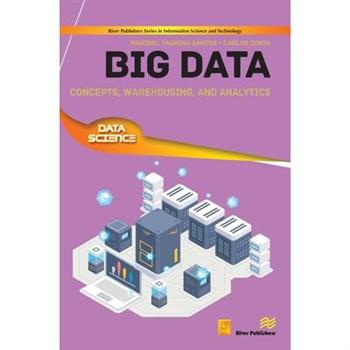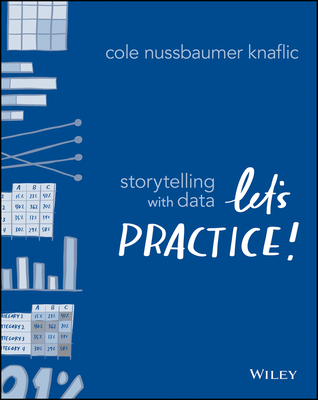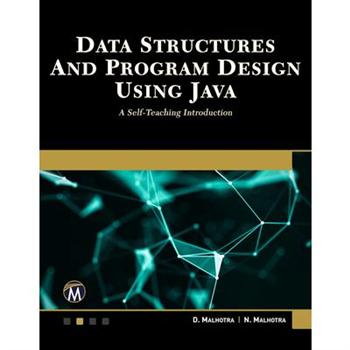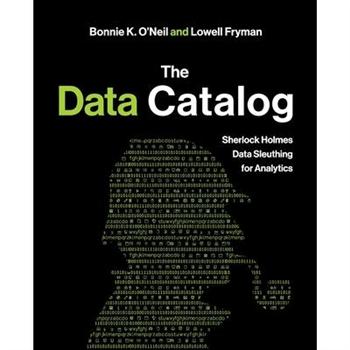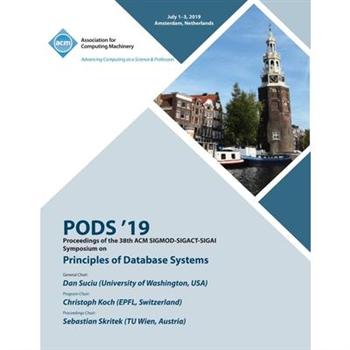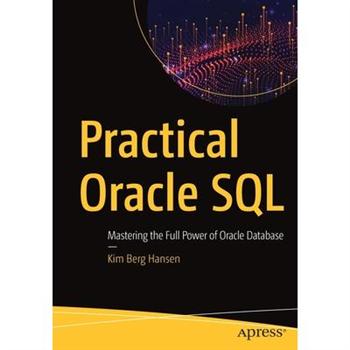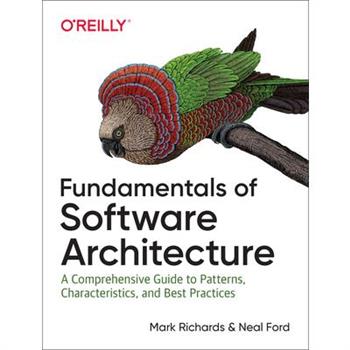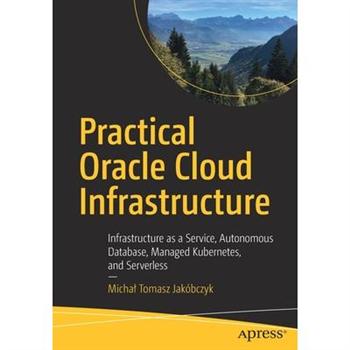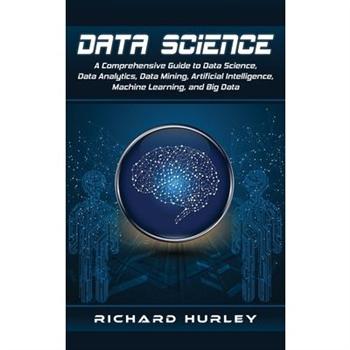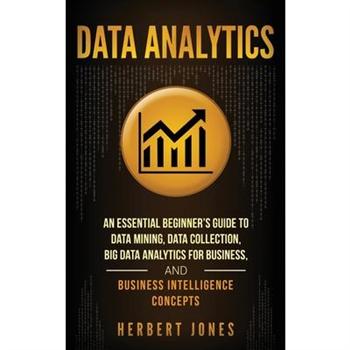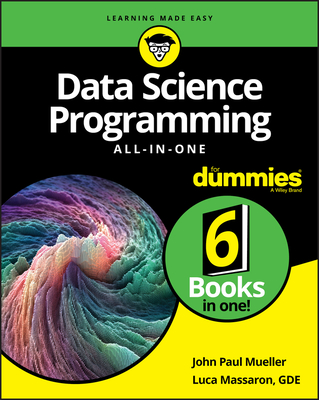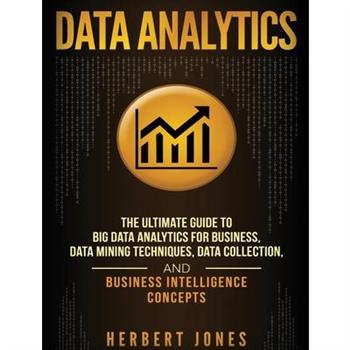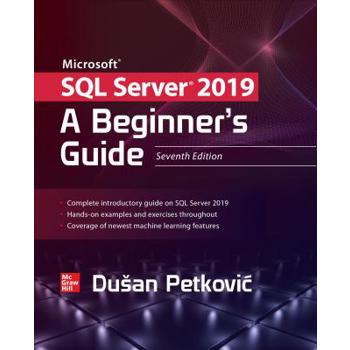A Practical Guide to Database Design
This book contains a major update to the previous edition. It covers how to implement and manage the Database Management System (DBMS) itself, how to write scripts to extract and load data from source files, and how to develop user interfaces to view and update data within the database.
Modern Information Technology and It Education
This book constitutes the refereed proceedings of the 13th International Conference on Modern Information Technology and IT Education, held in Moscow, Russia, in November-December 2018. The 30 full papers and 1 short papers were carefully reviewed and selected from 164 submissions. The papers are organized according to the following topics: IT-education: methodology, methodological support; e-learning and IT in education; educational resources and best practices of IT-education; research and development in the field of new IT and their applications; scientific software in education and science; school education in computer science and ICT; economic informatics.
Bioinformatics Database Systems
Modern biological databases comprise not only data, but also sophisticated query facilities and bioinformatics data analysis tools. This book provides an exploration through the world of Bioinformatics Database Systems.The book summarizes the popular and innovative bioinformatics repositories currently available, including popular primary genetic and protein sequence databases, phylogenetic databases, structure and pathway databases, microarray databases and boutique databases. It also explores the data quality and information integration issues currently involved with managing bioinformatics databases, including data quality issues that have been observed, and efforts in the data cleaning field.Biological data integration issues are also covered in-depth, and the book demonstrates how data integration can create new repositories to address the needs of the biological communities. It also presents typical data integration architectures employed in current bioinformatics databases.The latter part of the book covers biological data mining and biological data processing approaches using cloud-based technologies. General data mining approaches are discussed, as well as specific data mining methodologies that have been successfully deployed in biological data mining applications. Two biological data mining case studies are also included to illustrate how data, query, and analysis methods are integrated into user-friendly systems.Aimed at researchers and developers of bioinformatics database systems, the book is also useful as a supplementary textbook for a one-semester upper-level undergraduate course, or an introductory graduate bioinformatics course.
Mathematical Software - Icms 2020
This book constitutes the proceedings of the 7th International Conference on Mathematical Software, ICMS 2020, held in Braunschweig, Germany, in July 2020. The 48 papers included in this volume were carefully reviewed and selected from 58 submissions. The program of the 2020 meeting consisted of 20 topical sessions, each of which providing an overview of the challenges, achievements and progress in a environment of mathematical software research, development and use.
The Applied Data Science Workshop, Second EditionTheApplied Data Science Workshop, Second
Designed with beginners in mind, this workshop helps you make the most of Python libraries and the Jupyter Notebook's functionality to understand how data science can be applied to solve real-world data problems.Key Features Gain useful insights into data science and machine learning Explore the different functionalities and features of a Jupyter Notebook Discover how Python libraries are used with Jupyter for data analysis Book Description From banking and manufacturing through to education and entertainment, using data science for business has revolutionized almost every sector in the modern world. It has an important role to play in everything from app development to network security. Taking an interactive approach to learning the fundamentals, this book is ideal for beginners. You'll learn all the best practices and techniques for applying data science in the context of real-world scenarios and examples. Starting with an introduction to data science and machine learning, you'll start by getting to grips with Jupyter functionality and features. You'll use Python libraries like sci-kit learn, pandas, Matplotlib, and Seaborn to perform data analysis and data preprocessing on real-world datasets from within your own Jupyter environment. Progressing through the chapters, you'll train classification models using sci-kit learn, and assess model performance using advanced validation techniques. Towards the end, you'll use Jupyter Notebooks to document your research, build stakeholder reports, and even analyze web performance data. By the end of The Applied Data Science Workshop, you'll be prepared to progress from being a beginner to taking your skills to the next level by confidently applying data science techniques and tools to real-world projects. What you will learn Understand the key opportunities and challenges in data science Use Jupyter for data science tasks such as data analysis and modeling Run exploratory data analysis within a Jupyter Notebook Visualize data with pairwise scatter plots and segmented distribution Assess model performance with advanced validation techniques Parse HTML responses and analyze HTTP requests Who this book is for If you are an aspiring data scientist who wants to build a career in data science or a developer who wants to explore the applications of data science from scratch and analyze data in Jupyter using Python libraries, then this book is for you. Although a brief understanding of Python programming and machine learning is recommended to help you grasp the topics covered in the book more quickly, it is not mandatory.
Fundamentals of Parallel Multicore Architecture
This text provides all the material for a graduate or senior undergraduate course that focuses on the architecture of multicore processors. The book is also useful as a reference for professionals who deal with programming on multicore or designing multicore chips. It addresses programming issues in shared memory multiprocessors, covers the arch
Statistical and Machine-Learning Data Mining:
Interest in predictive analytics of big data has grown exponentially in the four years since the publication of Statistical and Machine-Learning Data Mining: Techniques for Better Predictive Modeling and Analysis of Big Data, Second Edition. In the third edition of this bestseller, the author has completely revised, reorganized, and repositioned the original chapters and produced 13 new chapters of creative and useful machine-learning data mining techniques. In sum, the 43 chapters of simple yet insightful quantitative techniques make this book unique in the field of data mining literature. What is new in the Third Edition: The current chapters have been completely rewritten. The core content has been extended with strategies and methods for problems drawn from the top predictive analytics conference and statistical modeling workshops. Adds thirteen new chapters including coverage of data science and its rise, market share estimation, share of wallet modeling without survey data, latent market segmentation, statistical regression modeling that deals with incomplete data, decile analysis assessment in terms of the predictive power of the data, and a user-friendly version of text mining, not requiring an advanced background in natural language processing (NLP). Includes SAS subroutines which can be easily converted to other languages. As in the previous edition, this book offers detailed background, discussion, and illustration of specific methods for solving the most commonly experienced problems in predictive modeling and analysis of big data. The author addresses each methodology and assigns its application to a specific type of problem. To better ground readers, the book provides an in-depth discussion of the basic methodologies of predictive modeling and analysis. While this type of overview has been attempted before, this approach offers a truly nitty-gritty, step-by-step method that both tyros and experts in the field can enjoy playing with.
Building Analytics Teams
Master the skills necessary to hire and manage a team of highly skilled individuals to design, build, and implement applications and systems based on advanced analytics and AIKey Features Learn to create an operationally effective advanced analytics team in a corporate environment Select and undertake projects that have a high probability of success and deliver the improved top and bottom-line results Understand how to create relationships with executives, senior managers, peers, and subject matter experts that lead to team collaboration, increased funding, and long-term success for you and your team Book Description In Building Analytics Teams, John K. Thompson, with his 30+ years of experience and expertise, illustrates the fundamental concepts of building and managing a high-performance analytics team, including what to do, who to hire, projects to undertake, and what to avoid in the journey of building an analytically sound team. The core processes in creating an effective analytics team and the importance of the business decision-making life cycle are explored to help achieve initial and sustainable success. The book demonstrates the various traits of a successful and high-performing analytics team and then delineates the path to achieve this with insights on the mindset, advanced analytics models, and predictions based on data analytics. It also emphasizes the significance of the macro and micro processes required to evolve in response to rapidly changing business needs. The book dives into the methods and practices of managing, developing, and leading an analytics team. Once you've brought the team up to speed, the book explains how to govern executive expectations and select winning projects. By the end of this book, you will have acquired the knowledge to create an effective business analytics team and develop a production environment that delivers ongoing operational improvements for your organization. What you will learn Avoid organizational and technological pitfalls of moving from a defined project to a production environment Enable team members to focus on higher-value work and tasks Build Advanced Analytics and Artificial Intelligence (AA&AI) functions in an organization Outsource certain projects to competent and capable third parties Support the operational areas that intend to invest in business intelligence, descriptive statistics, and small-scale predictive analytics Analyze the operational area, the processes, the data, and the organizational resistance Who this book is for This book is for senior executives, senior and junior managers, and those who are working as part of a team that is accountable for designing, building, delivering and ensuring business success through advanced analytics and artificial intelligence systems and applications. At least 5 to 10 years of experience in driving your organization to a higher level of efficiency will be helpful.
Hands-On Python Natural Language Processing
Get well-versed with traditional as well as modern natural language processing concepts and techniquesKey Features Perform various NLP tasks to build linguistic applications using Python libraries Understand, analyze, and generate text to provide accurate results Interpret human language using various NLP concepts, methodologies, and tools Book Description Natural Language Processing (NLP) is the subfield in computational linguistics that enables computers to understand, process, and analyze text. This book caters to the unmet demand for hands-on training of NLP concepts and provides exposure to real-world applications along with a solid theoretical grounding. This book starts by introducing you to the field of NLP and its applications, along with the modern Python libraries that you'll use to build your NLP-powered apps. With the help of practical examples, you'll learn how to build reasonably sophisticated NLP applications, and cover various methodologies and challenges in deploying NLP applications in the real world. You'll cover key NLP tasks such as text classification, semantic embedding, sentiment analysis, machine translation, and developing a chatbot using machine learning and deep learning techniques. The book will also help you discover how machine learning techniques play a vital role in making your linguistic apps smart. Every chapter is accompanied by examples of real-world applications to help you build impressive NLP applications of your own. By the end of this NLP book, you'll be able to work with language data, use machine learning to identify patterns in text, and get acquainted with the advancements in NLP. What you will learn Understand how NLP powers modern applications Explore key NLP techniques to build your natural language vocabulary Transform text data into mathematical data structures and learn how to improve text mining models Discover how various neural network architectures work with natural language data Get the hang of building sophisticated text processing models using machine learning and deep learning Check out state-of-the-art architectures that have revolutionized research in the NLP domain Who this book is for This NLP Python book is for anyone looking to learn NLP's theoretical and practical aspects alike. It starts with the basics and gradually covers advanced concepts to make it easy to follow for readers with varying levels of NLP proficiency. This comprehensive guide will help you develop a thorough understanding of the NLP methodologies for building linguistic applications; however, working knowledge of Python programming language and high school level mathematics is expected.
SQL Server Big Data Clusters
Use this guide to one of SQL Server 2019's most impactful features--Big Data Clusters. You will learn about data virtualization and data lakes for this complete artificial intelligence (AI) and machine learning (ML) platform within the SQL Server database engine. You will know how to use Big Data Clusters to combine large volumes of streaming data for analysis along with data stored in a traditional database. For example, you can stream large volumes of data from Apache Spark in real time while executing Transact-SQL queries to bring in relevant additional data from your corporate, SQL Server database. Filled with clear examples and use cases, this book provides everything necessary to get started working with Big Data Clusters in SQL Server 2019. You will learn about the architectural foundations that are made up from Kubernetes, Spark, HDFS, and SQL Server on Linux. You then are shown how to configure and deploy Big Data Clusters in on-premises environments or in the cloud. Next, you are taught about querying. You will learn to write queries in Transact-SQL--taking advantage of skills you have honed for years--and with those queries you will be able to examine and analyze data from a wide variety of sources such as Apache Spark. Through the theoretical foundation provided in this book and easy-to-follow example scripts and notebooks, you will be ready to use and unveil the full potential of SQL Server 2019: combining different types of data spread across widely disparate sources into a single view that is useful for business intelligence and machine learning analysis. What You Will LearnInstall, manage, and troubleshoot Big Data Clusters in cloud or on-premise environmentsAnalyze large volumes of data directly from SQL Server and/or Apache SparkManage data stored in HDFS from SQL Server as if it wererelational dataImplement advanced analytics solutions through machine learning and AIExpose different data sources as a single logical source using data virtualizationWho This Book Is ForData engineers, data scientists, data architects, and database administrators who want to employ data virtualization and big data analytics in their environments
End-to-End Data Science with SAS
Learn data science concepts with real-world examples in SAS! End-to-End Data Science with SAS: A Hands-On Programming Guide provides clear and practical explanations of the data science environment, machine learning techniques, and the SAS programming knowledge necessary to develop machine learning models in any industry. The book covers concepts including understanding the business need, creating a modeling data set, linear regression, parametric classification models, and non-parametric classification models. Real-world business examples and example code are used to demonstrate each process step-by-step. Although a significant amount of background information and supporting mathematics are presented, the book is not structured as a textbook, but rather it is a user's guide for the application of data science and machine learning in a business environment. Readers will learn how to think like a data scientist, wrangle messy data, choose a model, and evaluate the model's effectiveness. New data scientists or professionals who want more experience with SAS will find this book to be an invaluable reference. Take your data science career to the next level by mastering SAS programming for machine learning models.
Learn Grafana 7.0
A comprehensive introduction to help you get up and running with creating interactive dashboards to visualize and monitor time-series data in no timeKey Features Install, set up, and configure Grafana for real-time data analysis and visualization Visualize and monitor data using data sources such as InfluxDB, Prometheus, and Elasticsearch Explore Grafana's multi-cloud support with Microsoft Azure, Amazon CloudWatch, and Google Stackdriver Book Description Grafana is an open-source analytical platform used to analyze and monitoring time-series data. This beginner's guide will help you get to grips with Grafana's new features for querying, visualizing, and exploring metrics and logs no matter where they are stored. The book begins by showing you how to install and set up the Grafana server. You'll explore the working mechanism of various components of the Grafana interface along with its security features, and learn how to visualize and monitor data using, InfluxDB, Prometheus, Logstash, and Elasticsearch. This Grafana book covers the advanced features of the Graph panel and shows you how Stat, Table, Bar Gauge, and Text are used. You'll build dynamic dashboards to perform end-to-end analytics and label and organize dashboards into folders to make them easier to find. As you progress, the book delves into the administrative aspects of Grafana by creating alerts, setting permissions for teams, and implementing user authentication. Along with exploring Grafana's multi-cloud monitoring support, you'll also learn about Grafana Loki, which is a backend logger for users running Prometheus and Kubernetes. By the end of this book, you'll have gained all the knowledge you need to start building interactive dashboards. What you will learn Find out how to visualize data using Grafana Understand how to work with the major components of the Graph panel Explore mixed data sources, query inspector, and time interval settings Discover advanced dashboard features such as annotations, templating with variables, dashboard linking, and dashboard sharing techniques Connect user authentication to Google, GitHub, and a variety of external services Find out how Grafana can provide monitoring support for cloud service infrastructures Who this book is for This book is for business intelligence developers, business analysts, data analysts, and anyone interested in performing time-series data analysis and monitoring using Grafana. Those looking to create and share interactive dashboards or looking to get up to speed with the latest features of Grafana will also find this book useful. Although no prior knowledge of Grafana is required, basic knowledge of data visualization and some experience in Python programming will help you understand the concepts covered in the book.
Ein Physiologiemodell F羹r Tactical Combat Casualty Care Training in Mobilen Serious Games
Julia Hofmann konzipiert in diesem Open Access Buch ein Physiologiemodell f羹r die pr瓣zise Simulation bestimmter Verletzungsfolgen und deren Behandlung in einer Computerspielumgebung. Ihre Ergebnisse leisten einen wichtigen Beitrag, um die Ausbildung von Einsatzkr瓣ften in der taktischen Verwundetenversorgung mit neuen Medien zu verbessern. Prim瓣re Zielgruppe sind dabei die sogenannten Erst-Helfer-Bravo der Bundeswehr. Die medizinische Grundlage der Arbeit bildet der internationale Erstversorgungsalgorithmus Tactical Combat Casualty Care, der die ?berlebenschancen lebensbedrohlich verwundeter Personen erwiesenerma?en deutlich erh繹ht. Das entworfene Physiologiemodell wurde mithilfe praktizierender Notfallmediziner und Ausbilder der Bundeswehr validiert.
Computational Advances in Bio and Medical Sciences
This book constitutes revised selected papers from the 9th International Conference on Computational Advances in Bio and Medical Sciences, ICCABS 2019, held in Miami, Florida, USA in November 2019.The 15 papers presented in this volume were carefully reviewed and selected from 30 submissions. They deal with topics such as computational biology; biomedical image analysis; biological networks; cancer genomics; gene enrichment analysis; functional genomics; interaction networks; protein structure prediction; dynamic programming; and microbiome analysis.
Data and Information in Online Environments
This book constitutes the refereed post-conference proceedings of the First International Conference on Data and Information in Online Environments, DIONE 2020, which took place in Florian籀polis, Brazil, in March 2020. DIONE 2020 handles the growing interaction between the information sciences, communication sciences and computer sciences. The 18 revised full papers were carefully reviewed and selected from 37 submissions and focus on the production, dissemination and evaluation of contents in online environments. The goal is to improve cooperation between data science, natural language processing, data engineering, big data, research evaluation, network science, sociology of science and communication communities.
Modern Data Mining Algorithms in C++ and Cuda C
Discover a variety of data-mining algorithms that are useful for selecting small sets of important features from among unwieldy masses of candidates, or extracting useful features from measured variables. As a serious data miner you will often be faced with thousands of candidate features for your prediction or classification application, with most of the features being of little or no value. You'll know that many of these features may be useful only in combination with certain other features while being practically worthless alone or in combination with most others. Some features may have enormous predictive power, but only within a small, specialized area of the feature space. The problems that plague modern data miners are endless. This book helps you solve this problem by presenting modern feature selection techniques and the code to implement them. Some of these techniques are: Forward selection component analysis Local feature selectionLinking features and a target with a hidden Markov modelImprovements on traditional stepwise selectionNominal-to-ordinal conversion All algorithms are intuitively justified and supported by the relevant equations and explanatory material. The author also presents and explains complete, highly commented source code. The example code is in C++ and CUDA C but Python or other code can be substituted; the algorithm is important, not the code that's used to write it. What You Will Learn Combine principal component analysis with forward and backward stepwise selection to identify a compact subset of a large collection of variables that captures the maximum possible variation within the entire set. Identify features that may have predictive power over only a small subset of the feature domain. Such features can be profitably used by modern predictive models but may be missed by other feature selection methods. Find an underlying hidden Markov model that controls the distributions of feature variables and the target simultaneously. The memory inherent in this method is especially valuable in high-noise applications such as prediction of financial markets.Improve traditional stepwise selection in three ways: examine a collection of 'best-so-far' feature sets; test candidate features for inclusion with cross validation to automatically and effectively limit model complexity; and at each step estimate the probability that our results so far could be just the product of random good luck. We also estimate the probability that the improvement obtained by adding a new variable could have been just good luck. Take a potentially valuable nominal variable (a category or class membership) that is unsuitable for input to a prediction model, and assign to each category a sensible numeric value that can be used as a model input. Who This Book Is For Intermediate to advanced data science programmers and analysts.
Group Decision and Negotiation: A Multidisciplinary Perspective
This book constitutes the refereed proceedings of the 20th International Conference on Group Decision and Negotiation, GDN 2020, which was planned to be held in Toronto, ON, Canada, during June 7-11, 2020. The conference was cancelled due to the Coronavirus pandemic. Nevertheless, it was decided to publish the proceedings, because the review process had already been completed at the time the cancellation was decided. The field of Group Decision and Negotiation focuses on decision processes with at least two participants and a common goal but conflicting individual goals. Research areas of Group Decision and Negotiation include electronic negotiations, experiments, the role of emotions in group decision and negotiations, preference elicitation and decision support for group decisions and negotiations, and conflict resolution principles. The 14 full papers presented in this volume were carefully reviewed and selected from 75 submissions. They were organized intopical sections named: Conflict Resolution, Preference Modeling for Group Decision and Negotiation, Intelligent Group Decision Making and Consensus Process, Collaborative Decision Making Processes.
Managing Data Quality
This book explains data quality management in practical terms, focusing on three key areas - the nature of data in enterprises, the purpose and scope of data quality management, and implementing a data quality management system, in line with ISO 8000-61.
Practical Statistics for Data Scientists
Statistical methods are a key part of data science, yet few data scientists have formal statistical training. Courses and books on basic statistics rarely cover the topic from a data science perspective. The second edition of this popular guide adds comprehensive examples in Python, provides practical guidance on applying statistical methods to data science, tells you how to avoid their misuse, and gives you advice on what's important and what's not. Many data science resources incorporate statistical methods but lack a deeper statistical perspective. If you're familiar with the R or Python programming languages and have some exposure to statistics, this quick reference bridges the gap in an accessible, readable format. With this book, you'll learn: Why exploratory data analysis is a key preliminary step in data science How random sampling can reduce bias and yield a higher-quality dataset, even with big data How the principles of experimental design yield definitive answers to questions How to use regression to estimate outcomes and detect anomalies Key classification techniques for predicting which categories a record belongs to Statistical machine learning methods that "learn" from data Unsupervised learning methods for extracting meaning from unlabeled data
Cisco HyperFlex im Einsatz
Hyperkonvergente Infrastrukturen (HCI) kombinieren Speichersysteme und Rechenleistung in regul瓣ren Servergeh瓣usen. Damit geh繹ren komplexe Speicherlandschaften und chaotische Serverschr瓣nke der Vergangenheit an. Der Trick dabei: Die Hardware wird virtualisiert und in Software abgebildet. Diesen Software-defined Storage platziert Cisco auf seinen UCS-Servern und tauft die Idee "HyperFlex". Cisco HyperFlex ist eine Plattform f羹r Rechenleistung, Speicher und Netzwerk. Obendrauf laufen virtuelle Maschinen auf VMware ESXi oder Microsoft Hyper-V. Durch die variable Anzahl von Servern und Festplatten skaliert sie vom gro?en Rechenzentrum bis zum kleinen Au?enstandort. Das Buch f羹hrt den Leser durch die Grundlagen von HCI und HyperFlex, gefolgt von der Planung und Installation auf "All Flash"-Servern. Die weiteren Kapitel testen HyperFlex auf Systemausf瓣lle und migrieren virtuelle Maschinen in die neue Umgebung. Dieses Buch ist der ideale Begleiter zum schnellen Verstehen von HyperFlex. Es richtet sich an Systemintegratoren, Admins und Entscheider, die HyperFlex jenseits der Marketingbrosch羹ren besichtigen wollen.
Analytics Best Practices
Deliver enterprise data analytics success by following Prashanth's prescriptive and practical techniques.Today, organizations across the globe are looking at ways to glean insights from data analytics and make good business decisions. However, not many business enterprises are successful in data analytics. According to Gartner, 80% of analytics programs do not deliver business outcomes. Mckinsey consulting says, less than 20% of the companies have achieved analytics at scale.So, how can a business enterprise avoid analytics failure and deliver business results? This book provides ten key analytics best practices that will improve the odds of delivering enterprise data analytics solutions successfully. It is intended for anyone who has a stake and interest in deriving insights from data analytics. The three key differentiating aspects of this book are: Practicality. This book offers prescriptive, superior, and practical guidance.Completeness. This book looks at data analytics holistically across the four key data analytics domains - data management, data engineering, data science, and data visualization.Neutrality. This book is technologically agnostic and looks at analytics concepts without any reference to commercial analytics products and technologies.Dr. Southekal proves why he is one of the leading thinkers on data and analytics today. 'Analytics Best Practices' is an indispensable guide for business leaders and those looking to get into the analytics field on the nuances, challenges, and immense opportunities with data.Douglas B. LaneyPrincipal, Data & Analytics Strategy, Caserta, and author of "Infonomics"
Blockchain
Do you want to find out what Blockchain is, how it works, and what it can do for you?This book could be the answer you are looking for...This book is the ultimate beginner's guide to understanding blockchain technology, cryptocurrencies, bitcoin and the future of money.In this guide, we shall be discussing everything there is to know about cryptocurrencies, their impact on the future of money and trade, and most importantly, how you can prepare yourself for the disruptive technology that is the blockchain.Here is just some of the information covered in this book: The History of Money What is the Blockchain Technology? History of the Blockchain A Chronological Development of Blockchain Related Technologies Benefits of the Blockchain Technology Disadvantages of Using Blockchain Technology Understanding Ethereum How Ethereum Developed How Ethereum Works How Smart Contracts Work The Application Possibilities for Smart Contracts How Mining Works How to Get Started with Blockchain and Implementing Blockchain into Business Operations Blockchain-Based Applications You Can Integrate Into Your Business How to Get Started with Smart Contract and Ethereum Web Development Understanding Cryptocurrencies and their Emergence How Cryptocurrencies Work Bitcoin Lifecycle: How Cryptocurrency Transactions Work How to Invest In Blockchain and Cryptocurrencies And Much More! Scroll to the top of the page and select the Add to Cart button to learn more about Blockchain!
Data Science Uncovering the Reality
Data Science has become a popular field of work today. However a good resource to understand applied Data Science is still missing. In Data Science Uncovering the Reality, a group of IITians unravel how Data Science is done in the industry. They have interviewed Data Science and technology leaders at top companies in India and presented their learnings here.This book will give you honest answers to questions such as: How to build a career in Data Science?How A.I. is used in the world's most successful companies.How Data Science leaders actually work and the challenges they face
How To Recover Deleted Files
If you want to discover how to solve your problems regarding loss data in your computer then, check this"How To Recover Deleted Files" guide. In this step-by-step guide, you will reap the following benefits: - Resolve data loss problems. - Learn how to prevent data loss. - Learn how to recover data due to system boot issue. - Learn how to recover data due to hard disk issue. - Discover how to recover Office data files. - Impress your friends to recover their computer from viruses, corrupted registry and files. - Discover how to make use of the computer data recovery tools. - Recover operating system from an unstable program. - Learn how to back-up your files and folders. - And much more.HowExpert publushes quick 'how to' guides on all topics from A to Z by everyday experts.
Learning SQL
As data floods into your company, you need to put it to work right away--and SQL is the best tool for the job. With the latest edition of this introductory guide, author Alan Beaulieu helps developers get up to speed with SQL fundamentals for writing database applications, performing administrative tasks, and generating reports. You'll find new chapters on SQL and big data, analytic functions, and working with very large databases. Each chapter presents a self-contained lesson on a key SQL concept or technique using numerous illustrations and annotated examples. Exercises let you practice the skills you learn. Knowledge of SQL is a must for interacting with data. With Learning SQL, you'll quickly discover how to put the power and flexibility of this language to work. Move quickly through SQL basics and several advanced features Use SQL data statements to generate, manipulate, and retrieve data Create database objects, such as tables, indexes, and constraints with SQL schema statements Learn how datasets interact with queries; understand the importance of subqueries Convert and manipulate data with SQL's built-in functions and use conditional logic in data statements
Human Activity Recognition using Wearable SensorsAn Introduction into how Deep Learning ca
Technological advancements in healthcare can contribute unquestionably in reducing healthcare strains by ensuring clinicians, doctors and other medical staff operate and conduct their daily activities more efficiently in the hospital vicinity. Since the turn of the 21st century, Human Activity Recognition (HAR) has undergone significant research in the healthcare domain. HAR utilised with powerful technologies can benefit remote patient monitoring, the elderly, patients suffering from chronic illness and ambient assisted living. Human activity recognition has shown to be effective in benefiting clinicians in the treatment and remote monitoring of patients. This field is not only vital for diagnosis and treatment, but also an assessment of how likely a medical patient will fall ill or die from certain diseases or health problems. To show the great importance of activity recognition in the health sector, analytically driving an improvement in accuracy in classifying patients' activities improves the relationship of patients and clinicians as well as reducing the possibility of a fatality. With Artificial Intelligence at the forefront of its revolutionary capabilities, a bright future is in store if we can implement it beneficially into our healthcare service. This book reveals how.
WebSci ’19Proceedings of the11th ACM Conference on Web Science
It is our great pleasure to welcome you to the 11th ACM Conference on Web Science (Websci'19), June 30 - July 3, 2019, Boston, MA, USA.This year, the conference theme is "Synergies for the Good: The Web and Society". We welcomedinterdisciplinary contributions, especially those that had a broad perspective on the web, includingthose that combined analyses of web data with other types of data (e.g., from surveys or interviews)to better understand user behavior (online and offline); carried out longitudinal studies; presentedsuccessful cases of interdisciplinary and cross-disciplinary web research; used mixed-methodapproaches; critically reflected on the methods used; discussed responsible forms of Web Science(e.g. regarding standards, methods, generalizability of results); and/or those that reflected on thesocietal impact of web research, how the web is perceived in the media and in society, and whetherthis clashes with our self-image of Web Science. Thus, research on the interaction of society and theweb was invited, and we received submissions highlighting web implications, synergies derived, and how the web as a socio-technical system will evolve in future.WebSci'19 was a unique conference where a multitude of disciplines converged in a creative andcritical dialogue with the aim of understanding the web and its impacts. WebSci'19 welcomedparticipation from diverse fields including (but not limited to) art, anthropology, computer andinformation sciences, communication, economics, humanities, informatics, law, linguistics, philosophy, political science, psychology, and sociology. Following the tradition of earlierconferences, contributions to WebSci'19 aimed to cross traditional disciplinary boundaries. Thecommunity engaged with novel and thought-provoking ideas and discussed original research, work in progress, analysis, and practice in the field of Web Science, its current theoretical, methodological, and epistemological challenges as well as Web practices of individuals, collectives, institutions, and platforms. This year we were very pleased to accept 41 submissions for the regular research track chosen outof 130 submissions. We are grateful for the support of the Program Committee which consisted of16 senior members and 66 regular members who selected an interesting, varied, exciting programcomprising 31 long and 10 short papers. In addition to the posters selected from the Call forPosters, eight contributions were invited to be presented as a poster because they sparked fruitfuldiscussions among the reviewers and were deemed to be of great interest and relevance to theWebSci'19 community.This year WebSci'19 encouraged authors to particularly prepare and publish reproducibilityinformation of conducted research and resources, such as source code and datasets. Authors wereasked to add (if possible) a link (e.g. DOI or URL) to data or any other information relevant to theirsubmission. With this measure WebSci'19 aimed at raising awareness of the reproducibility issueand demonstrated that, as a community-driven conference, it subscribes to and actively promotesOpen Science principles in research.
Integer Programming and Combinatorial Optimization
This book constitutes the refereed proceedings of the 21st International Conference on Integer Programming and Combinatorial Optimization, IPCO 2020, held in London, UK, in June 2020. The 33 full versions of extended abstracts presented were carefully reviewed and selected from 126 submissions. The conference is a forum for researchers and practitioners working on various aspects of integer programming and combinatorial optimization. The aim is to present recent developments in theory, computation, and applications in these areas.
Big DataConcepts, Warehousing, and Analytics
Big Data is a concept of major relevance in today's world, sometimes highlighted as a key asset for productivity growth, innovation, and customer relationship, whose popularity has increased considerably during the last years. Areas like smart cities, manufacturing, retail, finance, software development, environment, digital media, among others, can benefit from the collection, storage, processing, and analysis of Big Data, leveraging unprecedented data-driven workflows and considerably improved decision-making processes. The concept of a Big Data Warehouse (BDW) is emerging as either an augmentation or a replacement of the traditional Data Warehouse (DW), a concept that has a long history as one of the most valuable enterprise data assets. Nevertheless, research in Big Data Warehousing is still in its infancy, lacking an integrated and validated approach for designing and implementing both the logical layer (data models, data flows, and interoperability between components) and the physical layer (technological infrastructure) of these complex systems. This book addresses models and methods for designing and implementing Big Data Systems to support mixed and complex decision processes, giving special attention to BDWs as a way of efficiently storing and processing batch or streaming data for structured or semi-structured analytical problems.
Computer ArchitectureDigital Circuits to Microprocessors
An introductory text to computer architecture, this comprehensive volume covers the concepts from logic gates to advanced computer architecture. It comes with a full spectrum of exercises and web-downloadable support materials, including assembler and simulator, which can be used in the context of different courses. The authors also make available a hardware description, which can be used in labs and assignments, for hands-on experimentation with an actual, simple processor.This unique compendium is a useful reference for undergraduates, graduates and professionals majoring in computer engineering, circuits and systems, software engineering, biomedical engineering and aerospace engineering.Related Link(s)
Storytelling With Data
Influence action through data! This is not a book. It is a one-of-a-kind immersive learning experience through which you can become--or teach others to be--a powerful data storyteller. Let's practice! helps you build confidence and credibility to create graphs and visualizations that make sense and weave them into action-inspiring stories. Expanding upon best seller storytelling with data's foundational lessons, Let's practice! delivers fresh content, a plethora of new examples, and over 100 hands-on exercises. Author and data storytelling maven Cole Nussbaumer Knaflic guides you along the path to hone core skills and become a well-practiced data communicator. Each chapter includes: ● Practice with Cole: exercises based on real-world examples first posed for you to consider and solve, followed by detailed step-by-step illustration and explanation ● Practice on your own: thought-provoking questions and even more exercises to be assigned or worked through individually, without prescribed solutions ● Practice at work: practical guidance and hands-on exercises for applying storytelling with data lessons on the job, including instruction on when and how to solicit useful feedback and refine for greater impact The lessons and exercises found within this comprehensive guide will empower you to master--or develop in others--data storytelling skills and transition your work from acceptable to exceptional. By investing in these skills for ourselves and our teams, we can all tell inspiring and influential data stories!
Data Structures and Program Design Using Java
Data structures provide a means to managing large amounts of information such as large databases, using SEO effectively, and creating Internet/Web indexing services. This book is designed to present fundamentals of data structures for beginners using the Java programming language in a friendly, self-teaching format. Practical analogies using real world applications are integrated throughout the text to explain technical concepts. The book includes a variety of end-of-chapter practice exercises, e.g., programming, theoretical, and multiple-choice. Features: Covers data structure fundamentals using JavaNumerous tips, analogies, and practical applications enhance understanding of subjects under discussion"Frequently Asked Questions" integrated throughout the text clarify and explain conceptsIncludes a variety of end-of-chapter exercises, e.g., programming, theoretical, and multiple choice
The Data Catalog
Apply this definitive guide to data catalogs and select the feature set needed to empower your data citizens in their quest for faster time to insight. The data catalog may be the most important breakthrough in data management in the last decade, ranking alongside the advent of the data warehouse. The latter enabled business consumers to conduct their own analyses to obtain insights themselves. The data catalog is the next wave of this, empowering business users even further to drastically reduce time to insight, despite the rising tide of data flooding the enterprise.Use this book as a guide to provide a broad overview of the most popular Machine Learning (ML) data catalog products, and perform due diligence using the extensive features list. Consider graphical user interface (GUI) design issues such as layout and navigation, as well as scalability in terms of how the catalog will handle your current and anticipated data and metadata needs.This book is organized into three sections: Chapters 1 and 2 reveal the rationale for a data catalog and share how data scientists, data administrators, and curators fare with and without a data catalog. Chapters 3-10 present the many different types of data catalogs. Chapters 11 and 12 provide an extensive features' list, current trends, and visions for the future.
Architecting for ScaleHow to Maintain High Availability and Manage Risk in the Cloud
Every day, companies struggle to scale critical applications. As traffic volume and data demands increase, these applications become more complicated and brittle, exposing risks and compromising availability. With the popularity of software as a service, scaling has never been more important. Updated with an expanded focus on modern architecture paradigms such as microservices and cloud computing, this practical guide provides techniques for building systems that can handle huge quantities of traffic, data, and demand--without affecting the quality your customers expect. Architects, managers, and directors in engineering and operations organizations will learn how to build applications at scale that run more smoothly and reliably to meet the needs of customers. Learn how scaling affects the availability of your services, why that matters, and how to improve it Dive into a modern service-based application architecture that ensures high availability and reduces the effects of service failures Explore the Single Team Owned Service Architecture paradigm (STOSA)--a model for scaling your development organization in tandem with your application Understand, measure, and mitigate risk in your systems Use the cloud to build highly scalable applications
Pods ’19
It is our great pleasure to welcome you to the 38th ACM SIGMOD-SIGACT-SIGAI Symposiumon Principles of Database Systems (PODS 2019), held in Amsterdam, The Netherlands, on July 1-3, 2019, in conjunction with the 2019 ACM SIGMOD International Conference on Managementof Data.Since the first edition of the symposium in 1982, the PODS papers are distinguished by arigorous approach to widely diverse problems in data management, often bringing to beartechniques from a variety of different areas, including computational logic, finite model theory, computational complexity, algorithm design and analysis, programming languages, and artificialintelligence.The PODS Symposia study data management challenges in a variety of application contexts, including more recently parallel computation, streaming and realtime data, and graph dataprocessing algorithms. PODS has a tradition of being the premier international conference onthe theoretical and foundational aspects of data management, and the interested reader isreferred to the web page https: //databasetheory.org/pods for information on the history of thisconference series.This year's symposium continues this tradition and invited for submission papers providingoriginal, substantial contributions in one or more of the following categories: a) deep theoretical exploration of topical areas central to data management;b) new formal frameworks that aim at providing a basis for deeper theoretical investigation ofimportant emerging issues in data management; andc) validation of theoretical approaches from the lens of practical applicability in datamanagement. Papers in this track should provide an experimental evaluation that gives newinsight in established theories. Besides, they should provide a clear message to the databasetheory community as to which aspects need further (theoretical) investigation, based on theexperimental findings. As in previous years, PODS operated with two submission cycles. The first cycle allowed for thepossibility for papers to be revised and resubmitted. For the first cycle, 36 papers weresubmitted, 4 of which were directly selected for inclusion in the proceedings, and 8 were invitedfor a resubmission after a revision. The quality of the revised papers increased substantially withrespect to the first submission, and all of the revised papers were selected for the proceedings.For the second cycle, 51 papers were submitted, 17 of which were selected, resulting in 29 papersselected overall from a total number of 87 submissions.This volume contains the proceedings of PODS 2019, which include papers on the keynoteaddressed by Cynthia Dwork of Harvard University, the two invited tutorials, one of the twoGems talks, and 29 contributions that were selected by the Program Committee for presentationat the symposium.
Practical Oracle SQL
Write powerful queries using as much of the feature-rich Oracle SQL language as possible, progressing beyond the simple queries of basic SQL as standardized in SQL-92.Both standard SQL and Oracle's own extensions to the language have progressed far over the decades in terms of how much you can work with your data in a single, albeit sometimes complex, SQL statement. If you already know the basics of SQL, this book provides many examples of how to write even more advanced SQL to huge benefit in your applications, such as: Pivoting rows to columns and columns to rowsRecursion in SQL with MODEL and WITH clausesAnswering Top-N questionsForecasting with linear regressionsRow pattern matching to group or distribute rowsUsing MATCH_RECOGNIZE as a row processing engineThe process of starting from simpler statements in SQL, and gradually working those statements stepwise into more complexstatements that deliver powerful results, is covered in each example. By trying out the recipes and examples for yourself, you will put together the building blocks into powerful SQL statements that will make your application run circles around your competitors. What You Will LearnTake full advantage of advanced and modern features in Oracle SQLRecognize when modern SQL constructs can help create better applicationsImprove SQL query building skills through stepwise refinementApply set-based thinking to process more data in fewer queriesMake cross-row calculations with analytic functionsSearch for patterns across multiple rows using row pattern matchingBreak complex calculations into smaller steps with subquery factoringWho This Book Is ForOracle Database developers who already knowsome SQL, but rarely use features of the language beyond the SQL-92 standard. And it is for developers who would like to apply the more modern features of Oracle SQL, but don't know where to start. The book also is for those who want to write increasingly complex queries in a stepwise and understandable manner. Experienced developers will use the book to develop more efficient queries using the advanced features of the Oracle SQL language.
Fundamentals of Software Architecture
Salary surveys worldwide regularly place software architect in the top 10 best jobs, yet no real guide exists to help developers become architects. Until now. This book provides the first comprehensive overview of software architecture's many aspects. Aspiring and existing architects alike will examine architectural characteristics, architectural patterns, component determination, diagramming and presenting architecture, evolutionary architecture, and many other topics. Mark Richards and Neal Ford--hands-on practitioners who have taught software architecture classes professionally for years--focus on architecture principles that apply across all technology stacks. You'll explore software architecture in a modern light, taking into account all the innovations of the past decade. This book examines: Architecture patterns: The technical basis for many architectural decisions Components: Identification, coupling, cohesion, partitioning, and granularity Soft skills: Effective team management, meetings, negotiation, presentations, and more Modernity: Engineering practices and operational approaches that have changed radically in the past few years Architecture as an engineering discipline: Repeatable results, metrics, and concrete valuations that add rigor to software architecture
Practical Oracle Cloud InfrastructureInfrastructure as a Service, Autonomous Database, Man
Use this fast-paced and comprehensive guide to build cloud-based solutions on Oracle Cloud Infrastructure. You will understand cloud infrastructure, and learn how to launch new applications and move existing applications to Oracle Cloud. Emerging trends in software architecture are covered such as autonomous platforms, infrastructure as code, containerized applications, cloud-based container orchestration with managed Kubernetes, and running serverless workloads using open-source tools. Practical examples are provided.This book teaches you how to self-provision the cloud resources you require to run and scale your custom cloud-based applications using a convenient web console and programmable APIs, and you will learn how to manage your infrastructure as code with Terraform. You will be able to plan, design, implement, deploy, run, and monitor your production-grade and fault-tolerant cloud software solutions in Oracle's data centers across the world, paying only for the resources you actually use. Oracle Cloud Infrastructure is part of Oracle's new generation cloud that delivers a complete and well-integrated set of Infrastructure as a Service (IaaS) capabilities (compute, storage, networking), edge services (DNS, web application firewall), and Platform as a Service (PaaS) capabilities (such as Oracle Autonomous Database which supports both transactional and analytical workloads, the certified and fully managed Oracle Kubernetes Engine, and a serverless platform based on an open-source Fn Project).What You Will LearnBuild software solutions on Oracle CloudAutomate cloud infrastructure with CLI and TerraformFollow best practices for architecting on Oracle CloudEmploy Oracle Autonomous Database to obtain valuable data insightsRun containerized applications on Oracle's Container Engine for KubernetesUnderstand the emerging Cloud Native ecosystemWho This Book Is For Cloud architects, developers, DevOps engineers, and technology students and others who want to learn how to build cloud-based systems on Oracle Cloud Infrastructure (OCI) leveraging a broad range of OCI Infrastructure as a Service (IAAS) capabilities, Oracle Autonomous Database, and Oracle's Container Engine for Kubernetes. Readers should have a working knowledge of Linux, exposure to programming, and a basic understanding of networking concepts. All exercises in the book can be done at no cost with a 30-day Oracle Cloud trial.
Data ScienceA Comprehensive Guide to Data Science, Data Analytics, Data Mining, Artificial
If you want to learn about data science and big data, then keep reading... Two manuscripts in one book: Data Science: What You Need to Know About Data Analytics, Data Mining, Regression Analysis, Artificial Intelligence, Big Data for Business, Data Visualization, Database Querying, and Machine Learning Big Data: A Guide to Big Data Trends, Artificial Intelligence, Machine Learning, Predictive Analytics, Internet of Things, Data Science, Data Analytics, Business Intelligence, and Data Mining This book will discuss everything that you need to know when it comes to working in the field of data science. This world has changed, and with the modern technology that we have, it is easier than ever for companies to amass a large amount of data on the industry, on their competition, on their products, and their customers. Gathering the data is the easy part, though. Being able to sort through this data and understand what it is saying is going to be a unique challenge all on its own. This is where the process and field of data science can come in. There is so much that we can explore and learn about when it comes to the world of data science, and this ultimate guide is here to help you navigate through these specialties. You will see just how important the ideas of data mining, data analytics, and even artificial intelligence are to our world as a whole today. Some of the topics covered in part 1 of this book include: What is Data Science? What Exactly Does a Data Scientist Do? A Look at What Data Analytics Is All About What is Data Mining and How Does It Fit in with Data Science? Regression Analysis Why is Data Visualization So Important When It Comes to Understanding Your Data? How to work with Database Querying A Look at Artificial Intelligence What is Machine Learning and How Is It Different from Artificial Intelligence? What is the Future of Artificial Intelligence and Machine Learning? And much more! Some of the topics covered in part 2 of this book include: What is big data, and why is it important? The five V's behind big data How big data is already impacting your life, and where big data may be headed How big data and your everyday devices and appliances will come together in unexpected ways via the Internet of Things How companies and governments are using predictive analytics to get ahead of the competition or improve service How big data is used for fraud detection How big data can train intelligent computer systems The many ways large corporations are benefiting from big data and the tools that use it like machine learning, AI, and predictive analytics Upcoming trends in big data that are sure to have a large impact on your future Artificial intelligence, and how big data drives its development What machine learning is and how it is tied to big data The relationship between big data, data analytics, and business intelligence Insights into how big data impacts privacy issues The pros and cons regarding big data And much, much more! So if you want to learn more about data science and big data, click the "add to cart" button!
Data Analytics
Say goodbye to scratching your head in confusionThis data analytics book could be the answer you're looking for...This book has lots of valuable eye-opening information about data analytics, which will help you understand the concept of data mining, data collection, big data analytics for business and business intelligence concepts.With this book, not only will you understand all the internal nitty-gritties about data analytics, you will also understand why data analytics is changing the business arena. You'll realize that the high-performance analytics will enable you to do stuff that you never thought about before probably because the volumes of data were just too big (among other reasons) and so much more.We'll begin by first examining what data analytics really means and what it entails. Do not fret when you meet challenging terms as you read on, as this book includes detailed explanations of words you may not understand.Here are just some of the topics that are discussed within this book: Overview Of Data Analytics: What Is Data Analytics (And Big Data Analytics)? Data Analytics And Business Intelligence Data Analysis And Data Analytics Data Mining Data Collection Types Of Data Analytics The Process: The Lifecycle Of Big Data Analytics Behavioral Analytics: Using Big Data Analytics To Find Hidden Customer Behavior Patterns Further Pattern Discovery In Advanced Analytics: Machine Learning And Much, Much More Get the book now and learn more about data analytics!
Data Science Programming All-in-one for Dummies
Your logical, linear guide to the fundamentals of data science programming Data science is exploding--in a good way--with a forecast of 1.7 megabytes of new information created every second for each human being on the planet by 2020 and 11.5 million job openings by 2026. It clearly pays dividends to be in the know. This friendly guide charts a path through the fundamentals of data science and then delves into the actual work: linear regression, logical regression, machine learning, neural networks, recommender engines, and cross-validation of models. Data Science Programming All-In-One For Dummies is a compilation of the key data science, machine learning, and deep learning programming languages: Python and R. It helps you decide which programming languages are best for specific data science needs. It also gives you the guidelines to build your own projects to solve problems in real time. Get grounded: the ideal start for new data professionals What lies ahead: learn about specific areas that data is transforming Be meaningful: find out how to tell your data story See clearly: pick up the art of visualization Whether you're a beginning student or already mid-career, get your copy now and add even more meaning to your life--and everyone else's!
Data Analytics
If you want to learn about data analytics and data mining then keep reading...2 comprehensive manuscripts in 1 book Data Analytics: An Essential Beginner's Guide To Data Mining, Data Collection, Big Data Analytics For Business, And Business Intelligence Concepts Data Mining: The Data Mining Guide for Beginners, Including Applications for Business, Data Mining Techniques, Concepts, and More With this book, not only will you understand all the internal nitty-gritties about data analytics and data mining, you will also understand why data analytics and data mining is changing the business arena. You'll realize that the high-performance analytics will enable you to do stuff that you never thought about before probably because the volumes of data were just too big (among other reasons) and so much more. Here are just some of the topics that are discussed in the first part of this book: Overview Of Data Analytics: What Is Data Analytics (And Big Data Analytics)? Data Analytics And Business Intelligence Data Analysis And Data Analytics Data Mining Data Collection Types Of Data Analytics The Process: The Lifecycle Of Big Data Analytics Behavioral Analytics: Using Big Data Analytics To Find Hidden Customer Behavior Patterns Further Pattern Discovery In Advanced Analytics: Machine Learning And Much, Much More In part 2 of this book, you will learn the following: Model creation How to prepare your data How to clean your data Data Mining Similarity and distances of data The effect of data distribution Association pattern mining What is cluster analysis? What is an outlier in data mining? How to deal with outliers in data mining Methods of identifying outliers in data Applications of data mining in the business industry So if you are serious about becoming an expert in data analytics and data mining, start with this book by clicking "buy now"!
Microsoft SQL Server 2019: A Beginner’s Guide, Seventh Edition
Publisher's Note: Products purchased from Third Party sellers are not guaranteed by the publisher for quality, authenticity, or access to any online entitlements included with the product.Get Up to Speed on Microsoft(R) SQL Server(R) 2019 Quickly and EasilyStart working with Microsoft SQL Server 2019 in no time with help from this thoroughly revised, practical resource. Filled with real-world examples and hands-on exercises, Microsoft SQL Server 2019: A Beginner's Guide, Seventh Edition starts by explaining fundamental relational database system concepts. From there, you'll learn how to write Transact-SQL statements, execute simple and complex database queries, handle system administration and security, and use powerful analysis and reporting tools. New topics such as SQL and JSON support, graph databases, and support for machine learning with R and Python are also covered in this step-by-step tutorial.- Install, configure, and customize Microsoft SQL Server 2019- Create and modify database objects with Transact-SQL statements- Write stored procedures and user-defined functions- Handle backup and recovery, and automate administrative tasks- Tune your database system for optimal availability and reliability- Secure your system using authentication, encryption, and authorization- Work with SQL Server Analysis Services, Reporting Services, and other BI tools- Gain knowledge of relational storage, presentation, and retrieval of data stored in the JSON format- Manage graphs using SQL Server Graph Databases- Learn about machine learning support for R and Python




